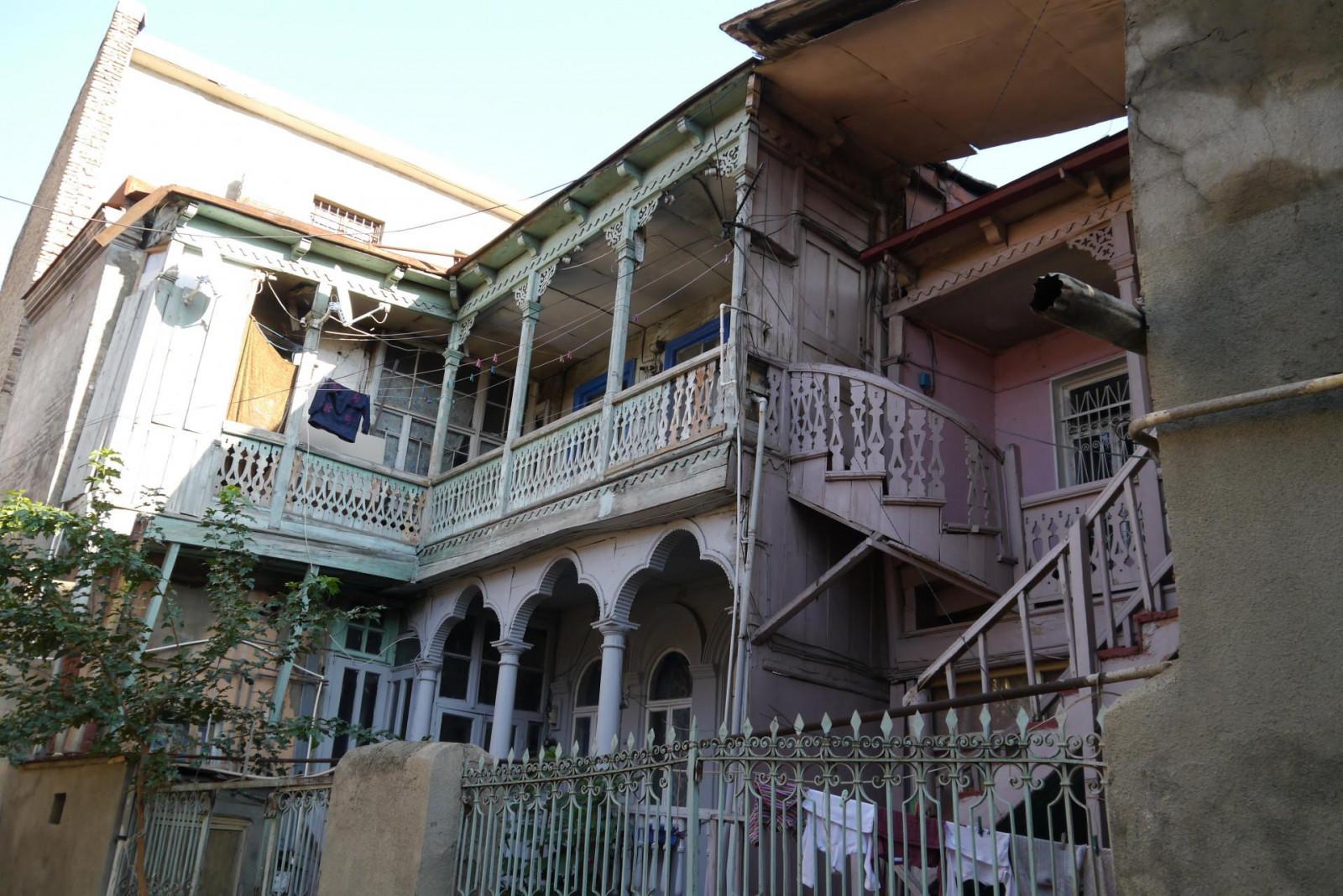
Old Tbilisi Balconies
The historical part of Old Tbilisi has significantly been changed over the decades. Historical and public buildings built in the XIX century have been substituted for completely new buildings. Fortunately, there still are the streets, street-stairs, alleys, and buildings in Tbilisi with their details, which keep the history of the city and gives you the opportunity to be a tourist in your own city and discover your share of Tbilisi.
In Old Tbilisi, the trade was active, the people were occupied with different fields of handicraft, which is reflected in the names of these streets. Therefore, there are streets named- Bambis Rigi (Cotton Row), Rkinis Rigi ( Iron Row), Mekvab Row, Topkhana, Kharazkhana, Sirajkhana. Besides, there are streets marking the handicraftsmen activities- Okromchedeli Street, Samghebro Street, Dabakhana and etc.
In the Middle Ages, Tbilisi was basically comprised of three parts, from which Kala was distinguished by size. Two containing parts of Kala- Upper and Lower Kala are made in the style of the medieval street network, which has survived to the present day. This time we will get acquainted with the highly artistic courtyard-balcony houses, concentrated in the streets of Kala, mainly dating back to the second half of the XIX century.
Balconies, the face of which finally settled in the 1940s, occupied the main place in Tbilisi residential houses. From the courtyard, the houses are decorated with plain wooden balconies, and on its facade, there are more pompous balconies. If we draw a parallel and recall the balconies of the houses kept in western Georgia, in particular in Samegrelo, Imereti and Racha, we will find that the linkage between them is obvious. The tradition of lathed balconies comes from the Oda houses typical for western Georgia. It is known, that openwork balcony was spread in eastern Georgia by masters traveling in western Georgia. Besides, the esthetic value of the balconies, the ornaments represented here, also have their symbolic meaning.
Alexandre Dumas Street which is located in the Kala district and is the first crossing street on the left from Freedom Square to Leselidze stands out by the antiquity of the residential houses. The whole street represents the gloriousness of the city, although we will mark out several buildings. At the beginning of the street, Dumas №8 stands the house, which distinguishes by the luxuriously decorated double facade balcony. The house was built in the second half of the XIX century.
In Dumas №13, is located the two-story house, built in 1840. In the surrounding development, it outstands with its high artistry. The building has two different styles of the facade from the street and inner yard. The plain facade of the unplastered brick is adorned with an arched wooden balcony that is already glazed today. The facade facing the yard is very decorative. The round pillars of the first floor support the colored glass strip on the second floor. The middle part of its arch is semicircular and the edges are arched.
At Dumas №9, the house balcony, which can be seen from the street is also especially beautiful. Unfortunately, it is in a state of disrepair, but even in this condition, we can imagine what it could have been like. In this street, you will also find the iron spiral stairs, typical for Tbilisi yard, which is connected to the second floor.
The first crossing street from Dumas Street, on the right, is Kalistrate Tsintsadze Street, where you will find a very small - Okromchedeli Street on the left. Even though there are no historical records of exactly which masters worked here, it is obvious from the name of the street, that the masters of different crafts, lived here. The living house, located at Okromchedeli №4 is very small, the yard of which can be seen even from the street. Before 2017, The entry door had a very interesting handle. Unfortunately, this handle is not in place today. However, a similar one can be found on the door of one of the houses located in Tamar Chovelidze (formerly Belinski) Street.
From Okromchedeli street we move to Vertskhli Street, from where to the left is Avlevi Street and on the right is Akopiani Street. The house balcony, located on Vertskhli Street is richly decorated. The house on the left is set against the newly built, modern style house, and on the right residential house, built in the second half of the XIX century. The facade of the house of the classicist elements is plastered with a five-arched balcony on the left corner of the second-floor facade. The balcony was supposedly glazed in the second half of the XX century. Its arches are curved into planks. The balcony railing planks are openwork like arches.
The residential house located at Alevi №19 also draws attention, which is built in the middle of the XIX century. The balcony facing the yard is two-story. Here, we can also find wooden spiral and linear stairs. The blue-painted balcony of the two-story house at Akofiani № 4/9 is very sophisticated, decorated with particularly hollow arches. From Akofiani and Avlev streets we move to Ietim Gurji Street, where the balcony of the house located at №11 is distinguished by its lacy hollow wooden arches and iron railings.
In that way, several houses, streets, where they are located, balcony ornaments and details, presented by us will give us an idea of where and how the ordinary people lived in XIX century Tbilisi. The houses shown here, which are concentrated in the Upper Kala and in the Kala district itself, allow you to take a detailed tour and view other important residential houses in that district and capture them on your tapes.





Please login to add a comment
Write a comment